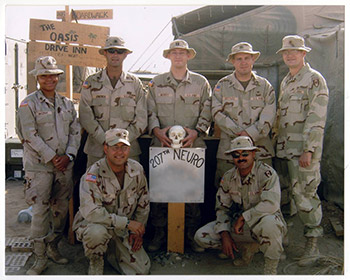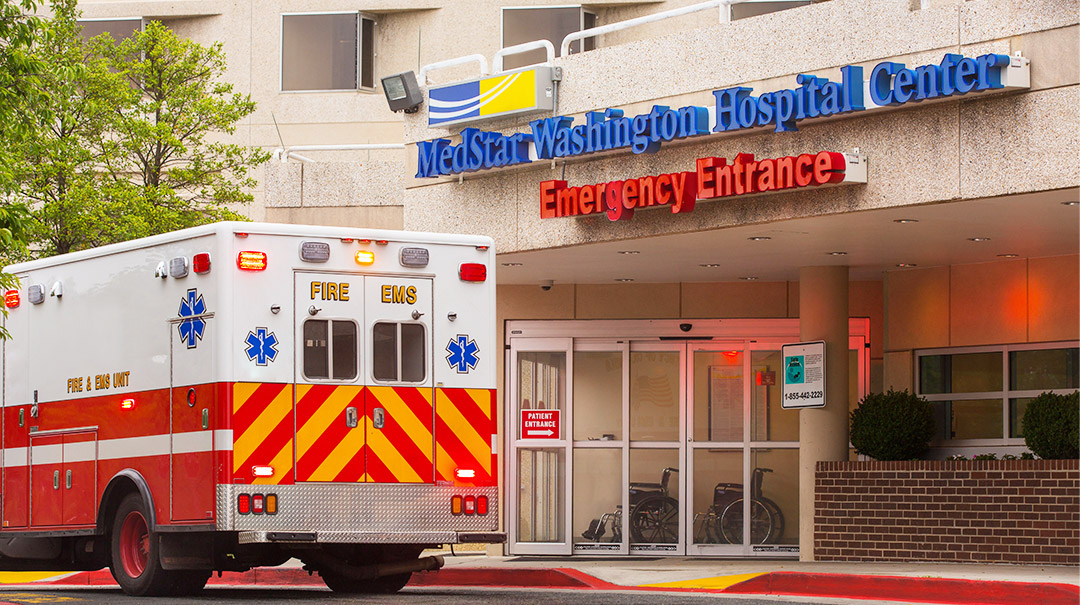When a patient has a stroke, seconds and minutes can make the difference between life or death. Similar to someone who has had a gunshot wound or a serious car accident, a patient who’s had a stroke needs emergency care to save their life or prevent permanent, life-altering disabilities, such as paralysis or speech difficulties.
Unfortunately, many factors can come together to slow down access to emergency care. Two of the factors I see most often that slow down patients’ access to stroke care are loved ones not recognizing the signs of a stroke and delays in getting patients to the right type of facility.
How do you know if your loved one has had a stroke?
Family members play a vital role in getting their loved ones stroke care as quickly as possible. But time after time, I see patients who have been delayed in getting care because their loved ones didn’t know the person was having a stroke.
This isn’t to place blame—compared to medical events like heart attacks,
strokes can be hard to notice for someone who isn’t actively looking for symptoms. During heart attacks, people are in obvious pain and often can tell you they need help. That’s not the case for people who are having strokes. Family members may notice something different about their loved ones but just wait too long before getting help. They may falsely believe the situation will improve without emergency care, unknowingly delaying treatment that could save their loved ones’ lives or function.
It’s also possible for family members to simply not see that anything’s wrong. Stroke symptoms involve a decrease in the level of function or in the ability to communicate. If that happens to your loved one in the middle of a conversation, you’re more likely to tell. But I’ve seen cases in which the patient has a stroke while sitting quietly in a chair, and the family just thinks their loved one is sleeping.
That’s why you need to be on the lookout for stroke symptoms, especially if your loved one is at risk for the condition. Strokes are more likely in people who:
- Are overweight or obese
- Don’t get enough exercise
- Have a cardiac rhythm disturbance such as atrial fibrillation
- Have a family history of strokes
- Have diabetes
- Have high blood pressure (hypertension)
If your loved one has one or more of these risk factors, and you suspect they’re having a stroke,
it’s time to think FAST:
- Face: Ask the person to smile. If they can’t, or if only one side of their face moves, it could be a sign of a stroke.
- Arms: Ask the person to raise their arms. A stroke can cause muscle weakness or paralysis, particularly on one side of the body.
- Speech: Ask the person to repeat a sentence. If they slur their words or have trouble speaking, they may be having a stroke.
- Time: Call 911 immediately. Don’t wait to see if the person gets better, and don’t try to take the person to the hospital yourself.
Where should your loved one go for stroke care?

During my time in the Army, I was on battlefield deployment in Iraq. I was one of just two Army neurosurgeons, and there were a lot of soldiers who needed our help. We worked out of a centralized location in the middle of the country, and all severely brain injured soldiers were brought to us. Centralizing the neurosurgical care for these patients saved time and lives by preventing delays.
Large vessel strokes should be treated with the same urgency and centralization as combat casualties are in war. Unfortunately, that’s not always the case. In our area, unnecessary delays have occurred when emergency medical services (EMS) personnel take patients having large vessel strokes to the nearest hospital that may lack the ability to perform lifesaving thrombectomies (catheter-based clot removals). Then, depending on that hospital’s affiliations or expertise, those patients end up getting transferred to facilities in Baltimore, or doctors rush from Baltimore to the patients. This wastes time that the patient may not have, and it just doesn’t make sense to me. In many cases, our Comprehensive Stroke Center and our sister hospital, MedStar Georgetown University Hospital, also a Comprehensive Stroke Center, are much closer than Baltimore to patients in Bethesda, Silver Spring, Rockville and many other communities.
While it may be tempting to rush a patient to a hospital that’s two miles from their house, it may not actually save the patient time in the long run. Our Comprehensive Stroke Center or MedStar Georgetown University Hospital may be 10 or 20 miles from the patient’s home, but the time saved in the initial decision of where to bring them can translate to saved brain function.
Especially for patients who need care for large-vessel occlusions, which are blockages in one of the large blood vessels bringing blood to the brain, treatment at a smaller hospital or one that doesn’t specialize in stroke care might not be enough. These patients may need a procedure called mechanical thrombectomy, a procedure to remove a stroke-causing blood clot that’s available only at specialized hospitals like ours.
Related reading: How mechanical thrombectomy is revolutionizing stroke care
How we streamline stroke care for our patients, and the vital role of EMS
We treat patients who are having a stroke with the same sort of urgency as patients who have had a traumatic injury. For patients who come directly to us, we mobilize the team immediately, so we can assess the patient and complete imaging studies within about 15 minutes, with treatment underway in less than an hour.
We’ve been working to bring our collaborative expertise from MedStar Washington Hospital Center and MedStar Georgetown University Hospital to hospitals that don’t specialize in endovascular stroke care through our regional telestroke program. When we identify a patient at one of these distant hospitals who needs emergency endovascular stroke care, we can help coordinate care there or bring the patient to us with emergency ground or air transportation. But that still can take precious minutes—time that might be saved if the patient were to get to us sooner.
I have talked to doctors and EMS personnel alike, so they know patients can get the advanced stroke care they need with us. Ultimately, though, it’s up to the EMS operators and fire stations in the district, as well as in the Maryland and northern Virginia counties in our area, to change the decision-making process for their services. Some states have avoided unnecessary delays by mandating that EMS bring these patients directly to centers with full-time and experienced neuroendovascular capabilities. EMS providers can access a process developed by the American Heart Association (AHA) and American Stroke Association (ASA) to determine what type of stroke a patient is having and which stroke center can best treat it. The process is available online as a PDF for EMS providers.
Ultimately, I’d like to see the AHA/ASA protocol become required at all levels—local, regional, state and national. Right now, there are no consequences for when the procedure isn’t followed, and families are left to pick up the pieces when their loved ones die or have their quality of life forever lowered because of strokes.
Having the most advanced tools and technology to treat strokes is a commitment we take seriously. Stroke care starts with the loved ones and first responders who have to make swift decisions about the patient’s care. It’s a lot of responsibility, but I’m hopeful that more patients can get timely emergency stroke care as more people learn what to do in this kind of emergency.
Learn more about thinking FAST if you think your loved one may be having a stroke.
